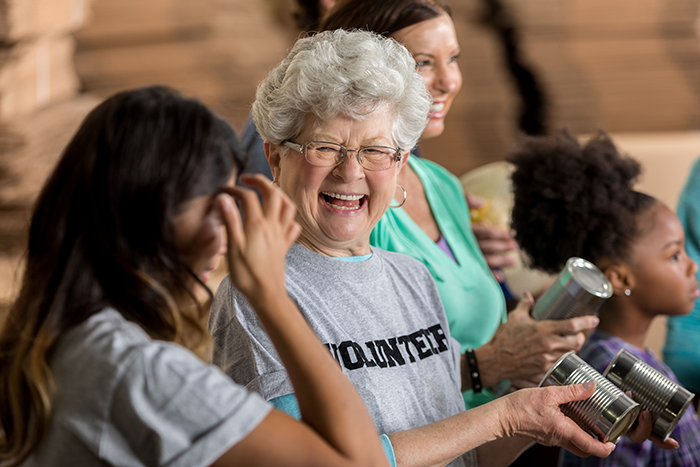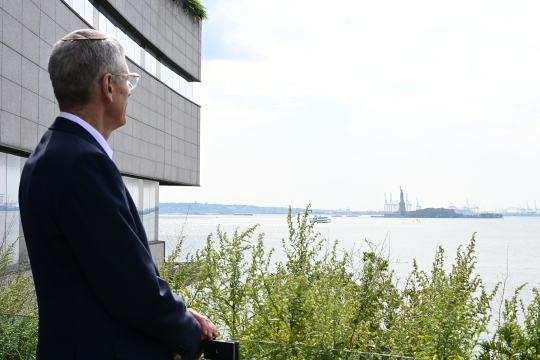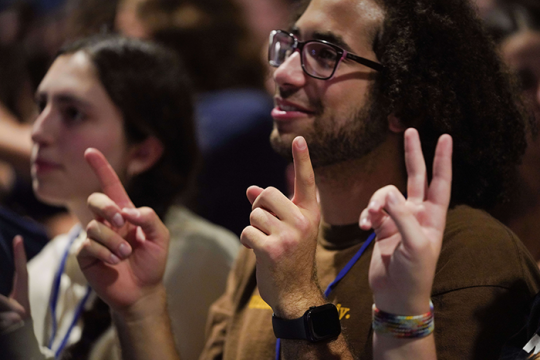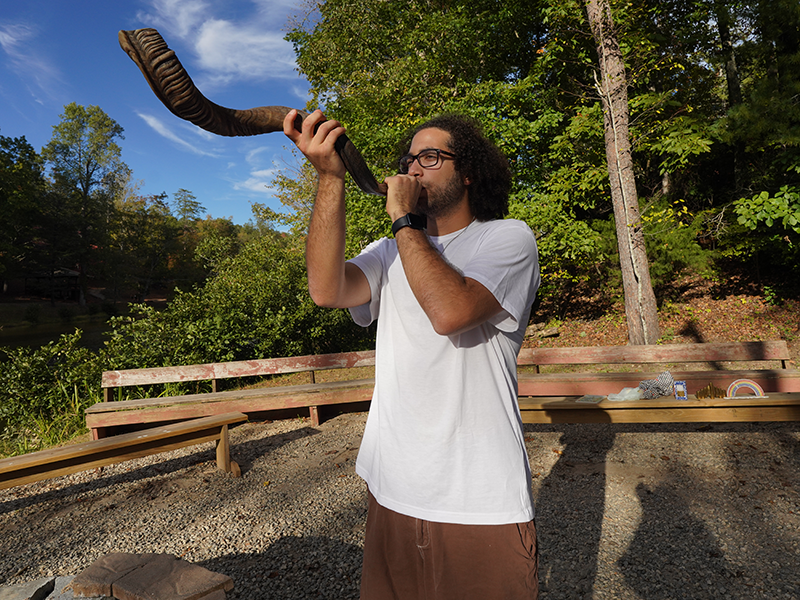
How often have you heard or said phrases like “increasing member engagement” or “the power of engagement?” If you’re like me, and the hundreds of leaders I’ve worked with in the congregational and nonprofit arena, the answer is probably every day.
We constantly talk about engagement. We try to grow it, sustain it, measure it. Yet, we rarely stop to define exactly what it means.
When I ask colleagues, synagogue leaders, and fellow community members to define engagement, I hear inspiring words, lofty goals, and plenty of jargon. As a consultant in member and volunteer engagement, I’ve used those same phrases myself. But a few years ago, I came across a profoundly simple definition that’s shaped my work ever since:
Engagement = Relationship + Action
This elegant equation, from a blog by Michael J. Brennan, captures what sets engagement apart from volunteering: both action and relationship are required.
Think about a time you showed up for a service project. Maybe you sorted canned goods or helped install drywall. You took action, but if you left without building a connection to other volunteers, the people served, or the cause itself, you were volunteering. You helped, but you weren’t rooted in the mission or community.
Over the years, I’ve watched hundreds of congregants assemble backpacks, run Purim carnival games, and serve meals. Yet many viewed themselves as one-time participants because they lacked a deeper relationship with the cause. They didn’t see how their efforts addressed the housing crisis, fought hunger, or advanced the congregation’s mission.
However, some congregations have made a shift. These communities intentionally design engagement plans to transform “participants” into engaged members. Their strategies focus on building relationships between members, volunteers, staff, and the broader community while offering meaningful ways to take action.
Now, flip the scenario: what about members who do have a relationship (often financial) with a synagogue but rarely take action? They may drop their kids off at Hebrew School or attend High Holiday services but are otherwise uninvolved. They have the relationship, but no action. Are they truly engaged?
Real engagement requires both sides of the equation.
Whether or not someone’s title includes the word “engagement,” creating this culture is everyone’s responsibility.
Congregations that do this well:
- Have a shared vision for engagement.
- Train leaders to talk about opportunities for involvement at every program, service, and gathering.
- Invite attendees at every event to take action in ways that are accessible, inclusive, and meaningful.
When someone expresses interest, leaders know how to follow up by exploring gifts, talents, and passions. These leaders then guide them toward opportunities where both action and relationships will grow.
In my work, I’ve seen how this approach transforms community life. When relationships and action work hand in hand, members feel ownership, purpose, and belonging.
Our upcoming consulting cohort on volunteer engagement is designed to help congregations develop this very culture. Teams from each participating congregation will:
- Craft a vision for engagement.
- Gain practical tools for inviting members into deeper involvement.
- Become champions of change and nurture a culture of engagement.
Our goal is to help members connect more deeply with one another and contribute meaningfully to the congregational community and mission.
To build true kehillah (community), congregations must create avenues for members to take action while fostering relationships.
As you plan the coming year’s mitzvah days (service days), programs, and events, ask yourself:
- How will we ensure people can act in ways that matter to them?
- How will we help them form or strengthen connections?
Integrating both action and connection is what turns participation into purpose and transforms volunteering into profound engagement.
Related Posts

A Message for Rosh HaShanah 5786

Wisdom Across Generations: Leading for Tomorrow

